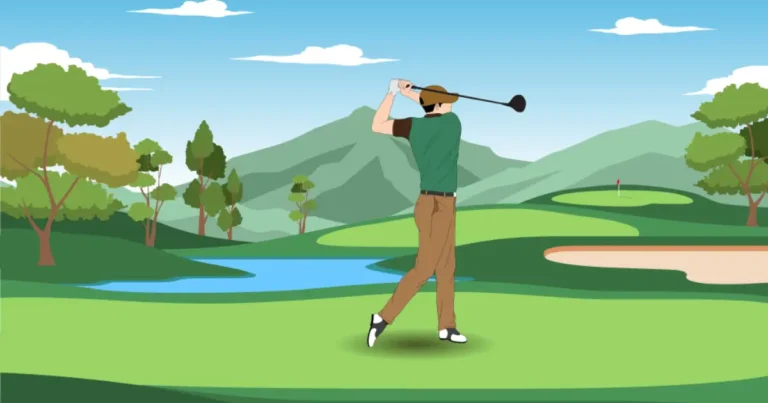How to Hit Your Golf Irons Straight and Pure
Learning how to hit your golf irons well is essential for scoring well and enjoying a round of golf. From proper setup and grip to the mechanics of an effective iron swing, there are several key elements to develop in your iron game. With some focused practice using drills tailored to your individual swing, you can gain consistency in striking solid iron shots that find the fairway or green. Read on for tips on grip, stance, swing path, contact, and other vital aspects of reliable ball-striking with your irons.
Proper Grip is the Foundation
The first step to hitting good golf shots of any kind starts with your grip. Your grip affects the clubface position at impact, which then determines the ball’s starting direction. For iron shots, you generally want a neutral clubface that is squared to your target line at impact so the ball goes straight towards your aim. Focus first on gripping the club correctly before moving into your stance.
Some key aspects of an effective iron grip include keeping the club mostly in your fingers instead of the palms, keeping both hands neutral without twisting away from each other, and ensuring your lead hand is fastened to the butt end of the grip while the trail hand falls naturally underneath it. Positioning both hands directly in line with or just slightly behind the clubhead will also promote solid contact. Spending a few minutes rehearsing proper grip technique before a practice session ensures you ingrain good habits.
Nail Your Setup for Consistency
Once you grasp the club correctly, move into your stance to further stabilize your swing. As golf legend Ben Hogan said, “Good golf begins with good grip and setup.” Your setup establishes your swing foundation and spinal angle, alignment to target, weight distribution, ball position, and more. Mastering your setup is crucial for hitting accurate, consistent iron shots.
When setting up for an iron shot, start by positioning the clubface square to your target line. Stand close enough to the ball with feet about shoulder width apart, knees slightly flexed, weight evenly balanced between arches and balls of feet. Keep your upper body erect, with spine tilted naturally from the hips at about a 30 degree angle. Position the ball roughly in line with your sternum, with exact ball position varying depending on which iron you hit. Verify your shoulders, hips, and feet align parallel left of target.
Swing Rhythm Links Backswing to Downswing
With solid grip and stance established, now make your backswing by rotating your torso guided by your arms and shoulders, keeping elbows close and wrists hinged. As you swing back, transfer weight onto your trailing foot while maintaining spine angle. At the peak, shift momentum to change directions as you begin the downswing accelerating the clubhead through impact as your hips clear. Learning appropriate swing rhythm and sequence takes repetition, but pays off in consistency.
A common mistake ams make is getting too handsy, losing structure in their backswing, swaying instead of turning, or casting the club early on the downswing. Stay athletic in your motion, keep elbows near your side, increase wrist hinge at the top, then shallow the plane as you powerfully swing down. As you do so, transfer weight to your lead side, allowing your torso and hips to pull the arms and clubhead through the hitting zone out in front of your sternum for solid ball-first contact.
Brush the Grass for Optimal Strike
Striking down with irons relies on brushing the grass behind the ball at impact, so you compress the ball then turf for ideal launch and backspin. This requires orientating your body and clubhead correctly through impact, so you sweep the ground slightly after contacting the ball. If you dig too deep or hit the ground first, you skull or thin shots. If you pick clean, you lose control of distance and trajectory.
To optimize your strike, use front foot and hip movement to shallow your swing just prior to impact. Maintaining spine angle and wrist hinge entering downswing helps swing the clubhead bottoms out several inches in front of the ball. Use an impact bag to rehearse this feeling of sweeping the turf post impact. CheckBall marking on the face afterwards show if you are catching it cleanly. Consistently brushing grass develops crisp compression for accurate approach shots.
Dial In Distances through Consistent Swing
As you develop a repeating swing for your irons listening for rhythmic whooshing sounds, you can begin consistently hitting specific yardages by swinging easier or harder while keeping mechanics intact. Most golfers make the mistake however of either decelerating into the ball during slower swings, or getting quick and handsy during harder swings. Maintain tempo and sequence regardless of chosen swing intensity.
Generally for full shots, take the clubback to parallel with the angle of spine tilt you established during setup. Making smooth, athletic turns through the swing builds clubhead speed for maximum distance in your trajectory window. Using the same swing structure even for finesse shots of varying trajectories simply requires shortening the backswing while keeping everything else consistent. Film your swing to ensure you maintain positions from different swing lengths. Matching tempo aids in ingraining one dependable move for all irons.
Practice Drills Reinforce Proper Technique
Like any complex athletic move, grooving an effective, repeating iron swing requires training muscle memory through purposeful practice. Start by making slow, smooth rehearsal swings, then progress to hitting actual shots while focusing on solid contact. Useful solo practice drills include alignment sticks to ingrain proper setup and swing planes, impact bags to rehearse compressions, marked clubs checking clubface positions, and half-shots ensuring solid sequencing rhythm.
Another essential training technique uses video capture for self-analysis while hitting balls during range sessions. Set your phone on a stand aimed downrange to record swing from various angles. Playback after each shot checking positions match your desired model at address, takeaway, backswing, transition, and impact. Identifying errors like swaying, casting, flipping provides opportunity to correct before positions get burned in muscle memory. Video often reveals true swing issues invisible to naked eye otherwise.
Course Management Strategies Lower Scores
Even with sound technique hitting iron shots on the practice range, effectively navigating approach shots round the course to lower scores requires sharp course management skills. From proper club selection, aiming lines accounting for wind, choosing pin positions, plotting effective leave distances and sequences, to visualizing the shot shape needed, wise strategy guides your shotmaking decisions. Develop keen judgement both for executing shots and recovering from mishits to save strokes.
Say for instance you face a front pin placement on a long par 4 with water short, overhanging trees behind the green, and wind coming left to right. Rather than attacking the flag, prudently choose a club reaching the center of green. Account for wind by aligning left edge of green. If you push or block the shot right, the overhang still gives you margin. Leave a mid-iron in for par putt. Making sensible decisions like this protect against big numbers while consistently reaching greens for scoring chances.
Track Statistics to Identify Needed Improvements
While primarily focusing on sound technique through lessons and practice, also examine stats from your actual course rounds to discover needed skill improvements for lower scoring. Keep a written record full shot distances, accuracy percentages, scrambling rates out of hazards, up and downs, and of course total putts. Statistics reveal your performance strengths and weaknesses to guide your development.
Say for example you strike irons well but struggle getting up and down to save par. You may benefit working more on finesse shots from 100 yards and in. Or if you hit plenty of greens but three putt too often, dedicating extra time on the practice putting green makes sense. Crunching numbers from your scorecards identifies weak links in your game so you know what elements to emphasize in training for quicker score reduction and more enjoyment.
In summary, developing repeatable iron play requires blending proper mechanics, sound strategy, structured practice, statistical analysis, and ongoing technique tuneups. Mastering solid ball striking, distance control, and shot shaping provides a platform for excelling at golf. Study and implement these essential tips for hitting great golf shots using every iron in your bag. With passion and perseverance, you can hit impressive iron shots flushing the sweetspot consistently.
Conclusion
Reliable ball-striking remains one of the biggest keys for scoring well in golf. Your ability to hit accurate approach shots close to hole locations impacts the length and quality of putts you face. Confidently swinging your irons to find the short grass gains scoring opportunities. Mastering proper setup, grip, tempo, impact, and practice habits breeds consistency.
Embrace healthy process goals, commit to skill refinement through repetitions, and manage decisions wisely based on your current capabilities. Implement these outlined tips for hitting iron shots well on the course to lower scores and increase enjoyment each round. Accept challenges with perspective, maintain resilience through misses by learning from errors, and take pride elevating your iron play heightened performance levels over time through purposeful practice.







